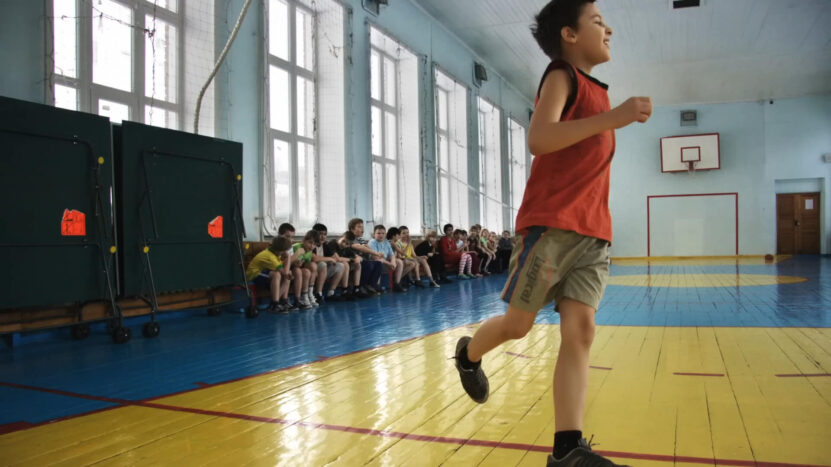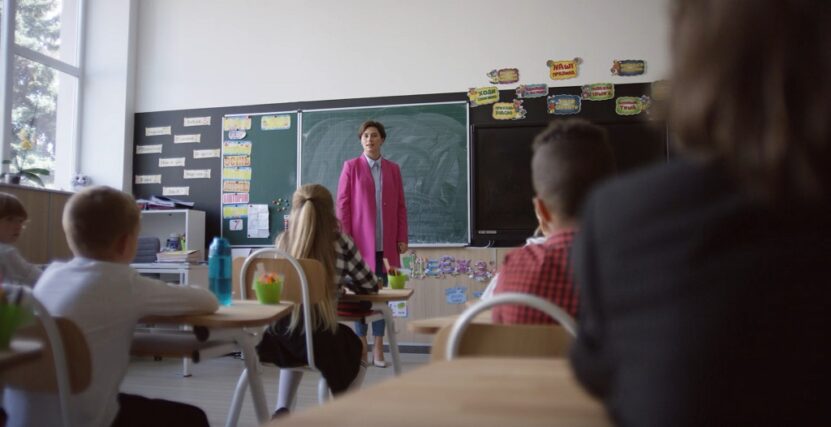
Share Post:
Teacher education programs are evolving to keep up with the latest fitness trends, helping future educators inspire students to stay active and healthy. Schools are placing a greater emphasis on physical wellness, and it is essential for teachers to be equipped with the right skills and knowledge.
These programs now include a broader focus, from combining health and physical education to offering hands-on classroom experience.
By keeping up with these shifts, educators are better prepared to create engaging lessons that encourage lifelong habits and promote overall student well-being.
Table of Contents
Toggle1. Bringing Health and Physical Education Together
Research consistently shows that students who are physically active perform better academically and have improved mental health. The Centers for Disease Control and Prevention (CDC) highlights the importance of this holistic approach, noting that active children are more likely to experience better concentration, memory, and overall academic success.
Teacher education programs are now preparing educators to use these benefits to support student learning effectively.
How Teacher Programs Integrate These Subjects

- Curriculum Overhaul: Courses now include units that teach how physical activities relate to topics such as nutrition, mental well-being, and disease prevention.
- Hands-On Learning: Future teachers participate in workshops where they design lessons that combine physical activity with health topics, like creating exercise routines that pair with discussions about heart health.
- Guest Experts and Collaboration: Programs bring in experts in sports science, nutrition, and mental health to provide insights and share real-world applications.
Research indicates that integrating health and physical education can lead to improved academic performance and better health outcomes. For instance, a study by the Centers for Disease Control and Prevention found that students who are physically active tend to have better grades, attendance, and classroom behaviors.
Key Components Taught in Integrated Courses
- Understanding Student Needs: Teachers learn to assess and address diverse health and fitness needs among students, especially focusing on age-appropriate strategies.
- Promoting Healthy Lifestyles: Educators are trained to teach students the importance of daily physical activity and balanced nutrition, encouraging long-term healthy habits.
- Use of Technology: With the rise of fitness apps and wearable devices, teacher programs emphasize using these tools to track and motivate student fitness, making health education engaging and relevant.
2. Focus on Fitness Education
A well-rounded fitness education now includes sports nutrition, teaching future educators how to address the dietary needs that support physical activity.
Programs encourage teachers to pursue Sports Nutrition Certification to gain a deeper understanding of how nutrition impacts performance, energy levels, and overall health.
With this certification, educators become better equipped to teach students about making informed food choices that fuel their bodies for physical activity. If you are looking to get a certificate in sports nutrition, ASFA is an excellent choice.
Key Elements of Fitness Education
- Understanding the Science of Movement: Courses cover the mechanics of exercise and how it benefits the body, ensuring that teachers can explain the “why” behind physical activity.
- Nutrition and Wellness Lessons: Teachers learn to educate students on how diet influences energy, muscle recovery, and overall well-being, using evidence-based strategies.
- Incorporating Modern Fitness Trends: Training now includes knowledge of popular fitness practices, from high-intensity interval training (HIIT) to mindfulness in exercise, making lessons more engaging.
3. Impact on Core Teaching Skills

Teacher education programs place strong emphasis on essential skills needed to effectively engage students in physical education.
Key Components of Core Teaching Skills
- Effective Communication: Teachers learn how to explain physical activities and health concepts in a way that is easily understood and engaging for all students.
- Classroom Management: Future educators gain techniques for maintaining an organized and safe environment, ensuring that physical education classes run smoothly.
- Motivational Strategies: Programs cover methods to inspire students of all abilities to participate, from using positive reinforcement to incorporating fun and inclusive activities.
4. Practical Experience for Future Teachers

Getting hands-on experience is crucial for teacher candidates. Programs now offer practical opportunities for future educators to work directly with students in real school environments. This hands-on approach allows them to apply what they learn in the classroom and refine their teaching techniques.
How Practical Experience Is Offered
- Fieldwork and Internships: Teacher candidates participate in internships where they assist seasoned educators in planning and delivering physical education lessons.
- Mentorship Opportunities: Programs often pair future teachers with experienced mentors who provide guidance and feedback, helping them grow in confidence and competence.
- Workshops and Simulations: Candidates engage in workshops that simulate real classroom situations, preparing them for the challenges of teaching physical education.
5. Adoption of Whole School Health Models
Teacher education programs are increasingly adopting frameworks like the Whole School, Whole Community, Whole Child (WSCC) model. This approach emphasizes the importance of a school-wide commitment to student health, where teachers, parents, and community members all play a role in promoting wellness.
What the WSCC Model Includes
- Collaboration Across Roles: Teachers learn how to work with school nurses, counselors, and administrators to create a cohesive plan for student health.
- Community Involvement: Programs teach future educators how to engage families and local organizations in supporting school wellness initiatives.
- Focus on Mental and Physical Health: The model addresses both physical fitness and mental well-being, preparing teachers to promote a balanced approach to health.
Why This Matters for Schools
Adopting a whole-school approach has proven benefits. According to the CDC, schools that implement WSCC-like models see improved student health outcomes, higher academic performance, and better overall school climate. Teacher training programs ensure that future educators are ready to contribute to these positive changes.
FAQs
How Can Teachers Use Technology in Physical Education?
Teachers can use fitness apps, wearable devices, and online platforms to track student progress, encourage participation, and make learning about physical activity engaging and interactive. These tools help motivate students and provide real-time feedback.
Why Is Classroom Management Important in Physical Education?
Classroom management is crucial in physical education to ensure safety and keep lessons organized. Good management helps create a structured environment where all students can actively participate and learn effectively.
What Are Modern Fitness Trends Teachers Should Know?
Teachers should be familiar with popular trends like high-intensity interval training (HIIT), yoga, mindfulness in exercise, and group fitness activities. These trends help keep students interested and can be adapted for different skill levels.
How Do Whole School Health Models Benefit Students?
Whole School Health Models benefit students by promoting a holistic approach to wellness, addressing both their physical and mental health needs. These models create a supportive environment where students can thrive academically and personally.
Last Words
Teacher education programs are evolving to align with current fitness trends. By prioritizing wellness and practical teaching methods, these adaptations ensure that future educators can inspire healthy, active habits among students.
Schools can better support student health and create an environment that encourages lifelong well-being.
Related Posts:
- The Truth About Online University Programs - Can You…
- How Do Career Changers Benefit From Accelerated…
- 9 Ways Remote Learning Is Changing Healthcare Education
- 10 Ways How You Can Bypass A School Firewall -…
- 10 Benefits of Integrating Technology into Education…
- What Is Multimodal Learning and How Does It Enhance…












